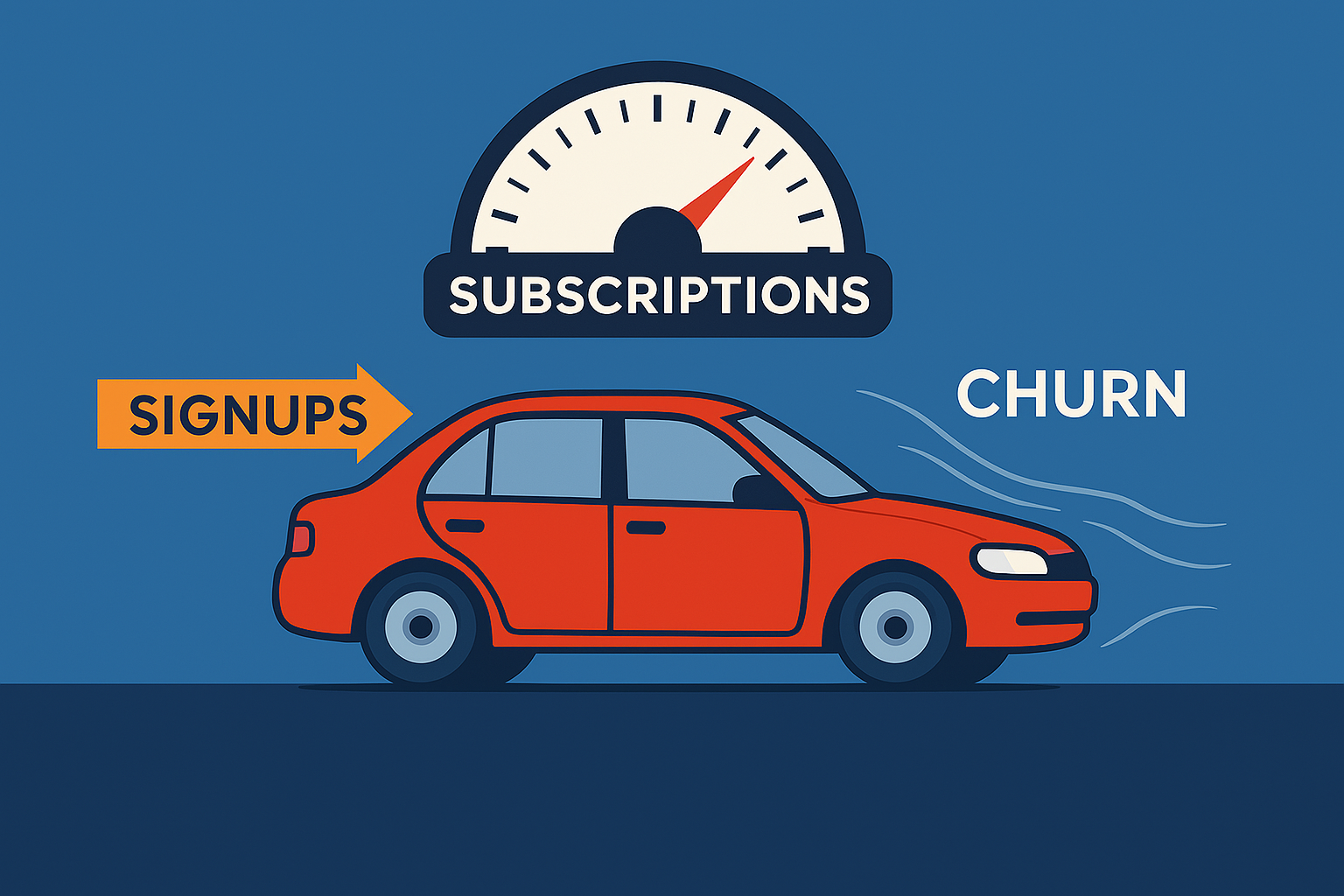Subscriptions as Velocity: A New Mental Model for Growth
Most businesses think of subscriptions as a static metric: a number you track over time. But that view is incomplete. In reality, subscriptions behave more like velocity in physics, a rate influenced by forces that push you forward and pull you back.
Let’s reframe how we think about subscription businesses using a simple physics analogy.
⸻
The Car Analogy
Imagine a car driving down a straight road:
The engine is your signups (new subscribers per month)
The air resistance is your churn (rate at which subscribers cancel)
The velocity of the car is your total number of subscribers at any given time
This model leads to a few key insights:
⸻
1. Subscriptions Are a Rate, Not a Snapshot
Velocity in physics is a rate of change over time. Subscriptions should be viewed the same way. Your subscriber count is the result of the forces at play - signups and churn - not the key metric itself.
Equation:
dS/dt = Signups - Churn
Where:
S = subscriber count
dS/dt = rate of change in subscribers (growth)
Signups = new users per time period
Churn = lost users per time period
This is the basic dynamic that governs the “speed” of your subscription business.
⸻
2. Terminal Velocity: The Plateau Effect
In physics, terminal velocity is the constant speed a falling object reaches when the force of gravity is balanced by the resistance of the air.
In subscriptions, terminal velocity is the point where your signups equal churn. Growth halts, and your business plateaus.
Implication: It doesn’t matter how many subscribers you have today; what matters is the ratio of signups to churn. That ratio defines your destination.
Visual:
This chart shows how businesses with different starting points eventually converge on the same “terminal velocity,” defined as:
Terminal Subscribers = Signups / Churn Rate
No matter how fast or slow you start, you eventually approach this equilibrium if your inputs remain unchanged.
3. Launching Out of a Cannon Doesn’t Guarantee Escape
Even if your business launches with a massive marketing push or viral moment (“shot out of a cannon”), that momentum fades. Unless your signup-to-churn ratio is favorable, you’ll eventually slow and settle at your terminal velocity.
⸻
4. The Faster You Go, the Stronger the Resistance
In physics, air resistance increases with velocity. The same is true in subscriptions.
The more subscribers you have, the more churn you have to fight. A larger base means more users are eligible to cancel every month.
So as your subscription count increases, so does the drag. Sustaining growth at scale takes more effort than getting off the ground.
5. The Path Forward: Optimizing the Forces
If you want to grow your subscriber base sustainably, you must:
Increase engine power: Improve signup conversion, expand distribution, reduce friction
Reduce air resistance: Improve product engagement, reduce time-to-value, invest in retention
Because your terminal subscriber count is:
Terminal Velocity = Signups / Churn Rate
Every improvement to either input directly impacts your ceiling.
⸻
Final Thought
Growth isn’t just about getting bigger numbers, it’s about understanding the system behind the numbers. Thinking of subscriptions as velocity, not inventory, gives operators a clearer lens into how to tune their business for the long term.
This mental model has helped me shift how I evaluate health and potential in subscription businesses. I hope it helps you too.

